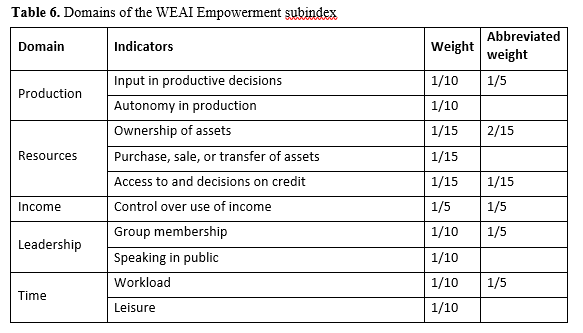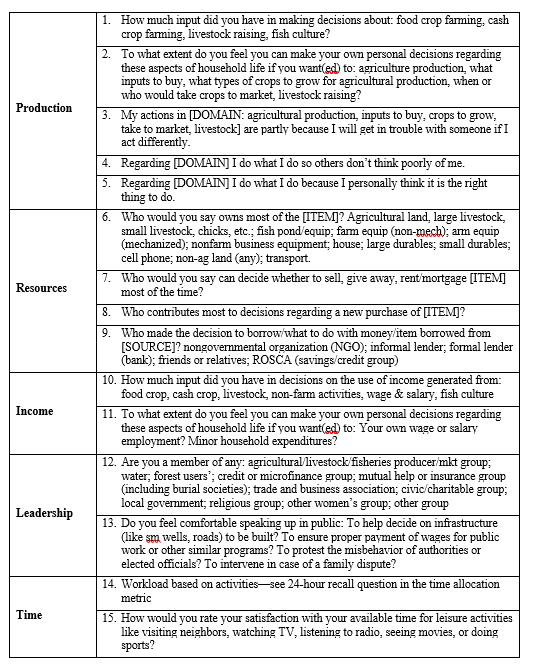You are here
Women's Empowerment in Agricultural Index (WEAI)
The WEAI (Alkire et al., 2013) is calculated by following a specific data collection method where male and female responses are compared. This survey process may be too demanding for many programs, but it does provide a great deal of information about the various facets of empowerment at the community or regional scale.
How to operationalize the metric
Method of data collection and data needed to compute the method:
The WEAI has five domains for the empowerment subindex: Production, Resources, Income, Leadership, and Time.
The gender parity subindex of the WEAI is calculated from two components:
- Gender parity – the percentage of women who have gender parity defined as either being empowered (scoring 0.80 or higher on the empowerment subindex) or having an empowerment index score greater than that of the primary male in their household.
- Empowerment gap – the average percentage shortfall that a woman without parity experiences relative to the male in her household.
The questions in the table below are the core questions from the WEAI survey. They provide a concise summary of the information that can be gained from implementing the WEAI; however, when actually carrying out the survey it is important to change the order of the questions and to use additional questions to improve the flow. A formatted questionnaire should be developed to help the enumerators ask the questions and mark the responses, and response codes should be designated to facilitate data entry and analysis.
Table 7. Core WEAI survey questions by dimension
Below is an example of how WEAI questions 1 and 10 from the above table are implemented in a survey, with all of the features mentioned, such as question and response guides and spaces to mark coded responses.
Unit of analysis:
Content here
Limitations regarding estimating and interpreting:
Content here




